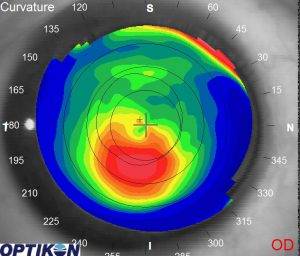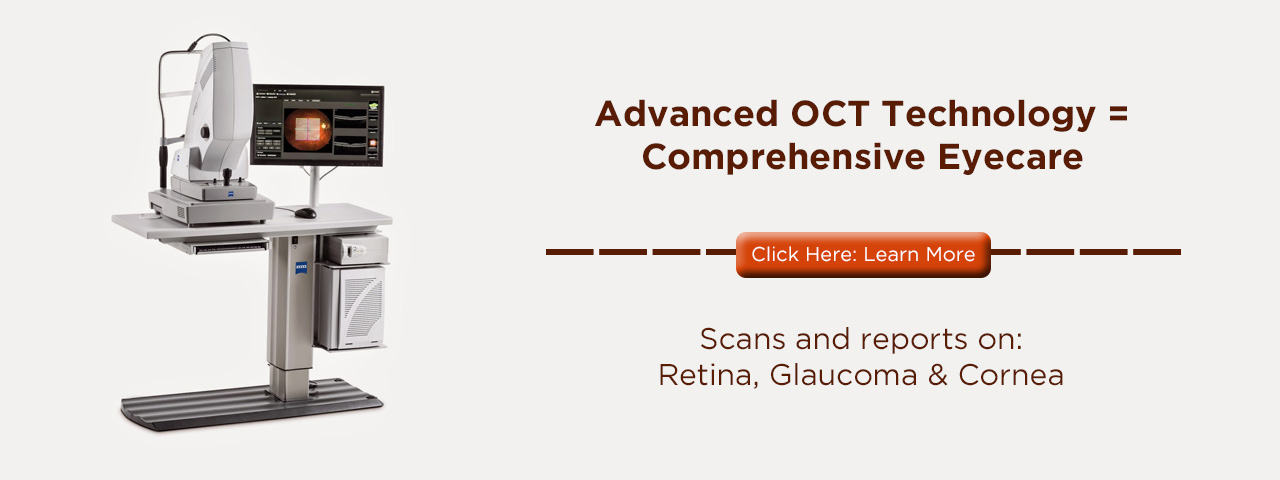
Topography of Normal Eye

Topography of Keratoconus Eye
New Treatment for Keratoconus
CXL is a new effective treatment for kerataconus. Keratoconus is an eye disease where the cornea becomes progressively more thin, distorted, and steepened. The cornea is the clear front surface of the eye. Vision becomes blurred and distorted as the cornea becomes misshaped. It normally effects both eyes, although it often progresses at different rates. Usually, we will see one eye more severely affected than the other.
Keratoconus is a fairly uncommon disease, affecting about one person in a thousand. The cause is unknown, and it starts developing and worsens most rapidly in young people. We usually see it for the first time on people in the early to mid-twenties. We can correct for the blurred vision caused by corneal distortion in the early stages by changes in the eyeglass prescription. After the disease progresses, eyeglasses cannot fully correct the problem and the best correctable vision starts decreasing. The end stage can be very severe vision loss that makes normal activities impossible. Sometimes we can help these patients with custom fit rigid contact lenses which can mask the corneal distortion, and sometimes only a corneal transplant can correct the vision. Corneal transplants are difficult surgeries and are not always fully successful.
The new treatment for keratoconus is called Corneal Cross-linking (CXL). CXL was first developed in Germany and has been done in Europe for at least a decade. The FDA just granted approval to Avedro, a pharmaceutical and medical device company, to market their technique for CXL in the United States.
CXL is a simple, safe, and effective way to stop the progression of keratoconus. It involves applying liquid riboflavin (Vitamin B2) to the cornea and then applying UV radiation to the cornea. This process creates numerous cross-links within the cornea that strengthens the tissue. Studies have shown that this treatment greatly decreases the progression of this disease. The best candidates are those patients who are first discovered to be developing keratoconus.These mild cases, where the vision is often still correctable to 20/20, are ideal if we can spare these people from the serious vision loss that may otherwise develop.

